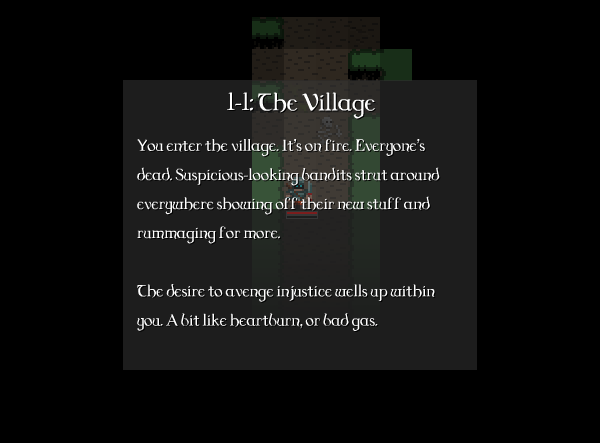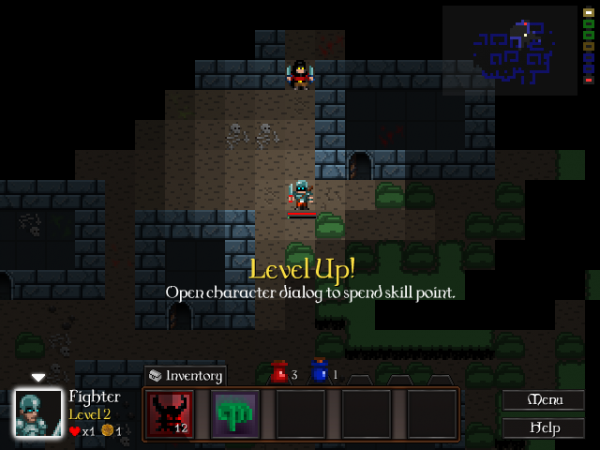I’ve recently been getting pretty sick lately of having a mess of an almost-game on my hands while I rummage around in its internals, fixing things and rewiring others. Since the last update I’ve focused on getting everything into a coherent (if crap) playable state – story, music, combat balance, shops, etc – just so I can finally get it in front of some people and start getting some feedback.
For example, with introductory plot and level entrance paths, town/forest levels now start a bit like this:
See? Crap but functional. Everything’s there (the UI slides in after), even if some of the stuff in the game is a bit wonky or placeholder. That copy’s not final, for example… the game’s going to have a slightly more serious tone!
Yesterday at Cambridge Indies CQ2 got its first real playtest, a quick runthrough by dock that gave me a ton of motivation and about a dozen things to fix. I’m now fixing all that stuff and similar things as they occur to me, so instead of my recent work featuring bold new systems and dialogs, my change log now looks like this:
The “Level up” notification was the main point of feedback. When you level up in CQ2 you get a talent point you can spend to increase your stats, learn a new spell or upgrade an existing spell. You have to go to the character screen to spend that talent point, but no-one was realising a) you got points to spend or b) that they’d just levelled up. Hell, I was missing it myself! There was a notification, but it was just a little glowy thing down in the corner.
I FIXED IT
It did not need to be SUBTLE.
I’m not doing much that shows up in screenshots right now. What I’m mostly doing, based on feedback and watching a few people play it briefly, is making every part of it a little tighter, clearer and smarter. The mouse behaves better. Confusing or awkward things are laid out more nicely. Things you should notice are getting more obvious or working more like you’d expect.
It’s getting more solid. Yeah, this is ‘polish’. I’d normally put it off to the end, but smoothing out these rough edges is making the game more immediately fun – and a fun game’s much more fun to work on. So here’s to polish… and to playtesting. 😀


